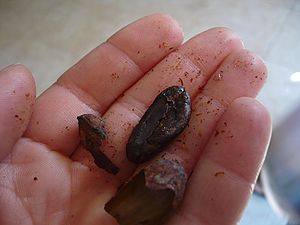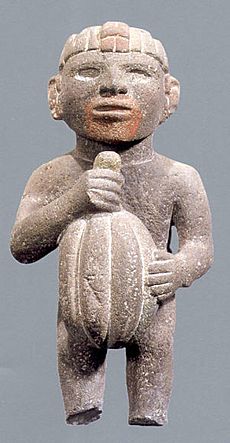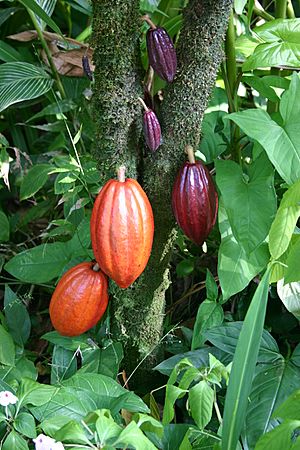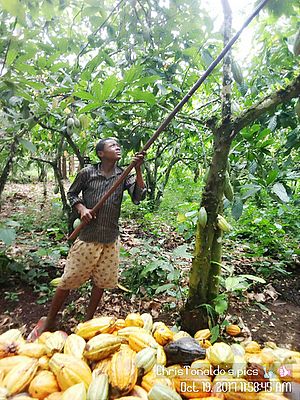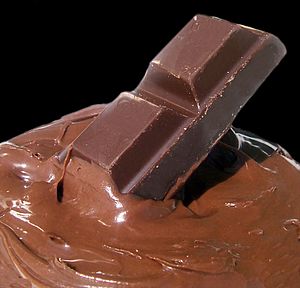Cocoa facts for kids
Cocoa is the seed of the cacao tree. These seeds are full of fat. They are used to make cocoa butter. Cocoa butter is then used to create delicious chocolate. Many people know cocoa as a brown powder. This powder is used to make chocolate or a warm drink called hot cocoa.
Contents
The Story of Cocoa
Chocolate and cocoa come from the beans of the cacao tree. This tree might have first grown near the Amazon River in South America. Ancient Maya people brought the tree to Central America. Later, the Aztecs in Mexico also grew it.
Cocoa was very important in ancient Mesoamerica. People said that Moctezuma II, the Aztec emperor, drank only chocolate with his meals. It was served in a golden cup with a golden spoon! His chocolate had vanilla and spices. It was whipped into a froth that melted in the mouth. About 50 pitchers of this drink were made for the emperor each day. An amazing 2000 more were made for his court's nobles.
Chocolate came to Europe with the Spaniards. It became a popular drink by the 1700s. They also brought the cacao tree to the West Indies and the Philippines. A Swedish scientist named Carl von Linné gave the cacao plant its scientific name. He called it "theobroma cacao," which means "food of the gods."
How Cocoa is Harvested
A cocoa pod has a tough, leathery skin. It is about 3 cm (1¼ inch) thick. Inside, there is a slimy pinkish pulp. This pulp is sweet but you cannot eat it. It holds 30 to 50 large almond-like seeds, or "beans." These beans are soft and pinkish or purplish.
When the pods are ripe, workers cut them off the tree. They use a curved knife on a long pole. Then, they open the pods with a machete. The beans are taken out and piled up. For several days, the beans "sweat." This means the thick pulp around them ferments and drips away. This "sweating" step is very important for the bean's taste. If it's done too much, the beans can be ruined. If it's not done enough, they taste like raw potatoes.
After sweating, the beans are spread out to dry. They are constantly moved around. On big farms, this happens on huge trays, either in the sun or in sheds with heat. Smaller farms dry thousands of tons of beans on small trays or cowhides. Sometimes, red clay mixed with water is sprinkled on the beans. This gives them a nicer color and helps protect them from mold during shipping. About 3,000,000 tonnes of cocoa are grown every year. The Netherlands processes the most cocoa, followed by the United States.
What Cocoa is Used For
Cocoa has many uses! It can be used in cakes, creams, drinks, and as toppings.
Besides being a food, cocoa is also good for your health. Scientists have found that cocoa has many antioxidants. These are good for fighting off bad things in your body. Cocoa has almost twice the antioxidants of red wine. It has up to three times more than green tea!
Challenges in Growing and Selling Cocoa
- Many cocoa farmers do not get a fair price for their hard work. This is why you can find fair trade cocoa and chocolate in some stores. Fair trade means farmers are paid more fairly for their products.
- There have been problems with unfair labor practices in cocoa production. Efforts like the Cocoa Protocol are working to make sure all workers are treated well and paid fairly.
- Tiny insects called midges are the only ones that can pollinate cocoa flowers. If pesticides are used too much, they can harm these important midges.
Images for kids
See also
 In Spanish: Cocoa para niños
In Spanish: Cocoa para niños


